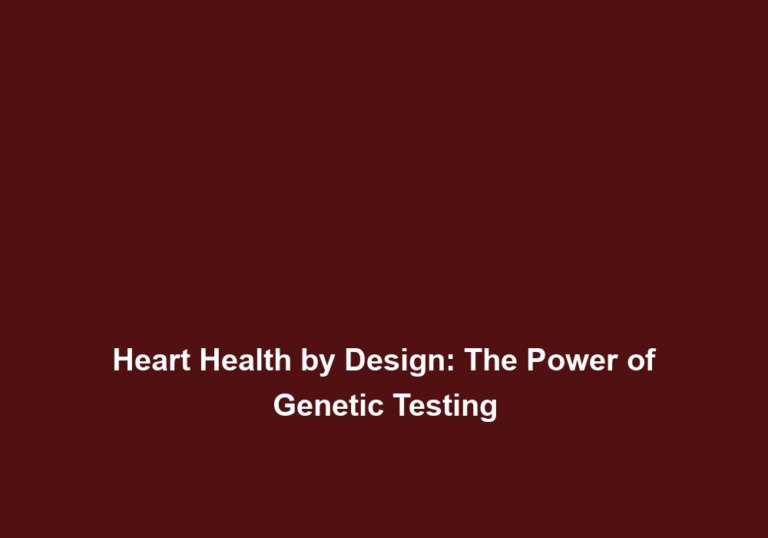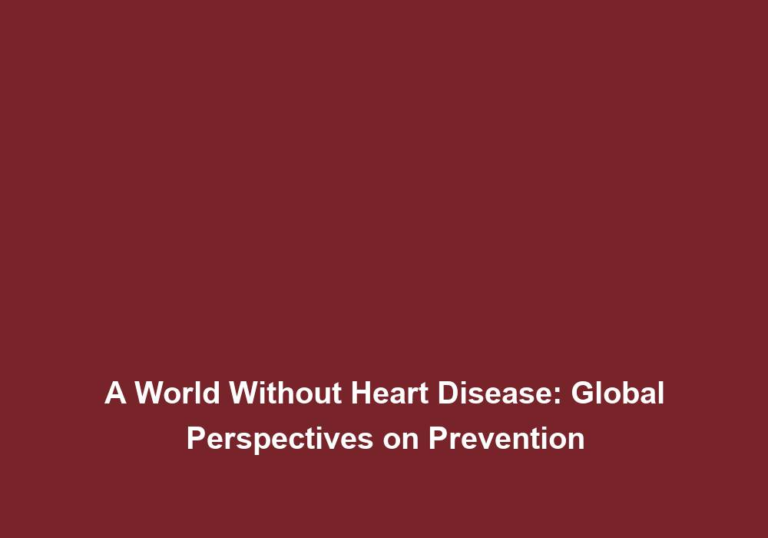The Heart’s Window: Non-Invasive Cardiology Techniques
The field of cardiology has made significant advancements in recent years, particularly in non-invasive techniques for diagnosing and treating cardiovascular diseases. These techniques have revolutionized the way we approach heart health, providing valuable insights into the functioning of the heart without the need for invasive procedures. In this article, we will explore some of the most prominent non-invasive cardiology techniques that have transformed the field and improved patient care.
1. Electrocardiography (ECG/EKG)
Electrocardiography, commonly known as ECG or EKG, is a fundamental non-invasive diagnostic tool used to evaluate the electrical activity of the heart. It involves placing electrodes on the patient’s chest, limbs, and sometimes the precordial area, which then record the electrical signals produced by the heart. These signals are displayed as a graph known as an electrocardiogram.
ECG plays a crucial role in diagnosing various heart conditions, such as arrhythmias, myocardial infarction, and conduction abnormalities. It can provide valuable information about the heart’s rhythm, rate, and overall function, aiding physicians in developing appropriate treatment plans.
Some additional information about ECG includes:
- ECG can also help identify electrolyte imbalances and drug toxicities that may affect the heart’s electrical activity.
- The interpretation of an ECG involves analyzing the different waves, intervals, and segments to identify any abnormalities or patterns.
- Continuous ECG monitoring, known as Holter monitoring, allows for the assessment of heart activity over an extended period, providing valuable data for diagnosis and treatment.
2. Echocardiography
Echocardiography is another non-invasive technique that utilizes ultrasound waves to create detailed images of the heart’s structures and assess its function. By placing a transducer on the patient’s chest, sound waves are directed towards the heart, and their reflections are used to generate real-time images.
This technique allows for the evaluation of the heart’s chambers, valves, and overall pumping efficiency. It helps in diagnosing conditions such as heart failure, valve abnormalities, and congenital heart defects. Additionally, echocardiography enables physicians to assess the blood flow patterns within the heart and detect any obstructions or abnormalities.
Further details about echocardiography include:
- Doppler echocardiography, a specific type of echocardiography, can measure the velocity and direction of blood flow, providing insights into conditions like valvular stenosis or regurgitation.
- Transesophageal echocardiography (TEE) involves inserting a specialized probe into the esophagus to obtain clearer images of the heart structures. TEE is particularly useful for assessing the presence of blood clots, infections, or abnormal communications within the heart.
3. Stress Testing
Stress testing, also known as an exercise stress test or treadmill test, is a non-invasive procedure that evaluates the heart’s response to physical exertion. It involves monitoring the heart’s electrical activity and blood pressure while the patient exercises on a treadmill or stationary bicycle.
During the test, the patient’s heart rate, blood pressure, and ECG readings are closely monitored. This helps identify any abnormal changes in the heart’s functioning, such as reduced blood supply to the heart muscle, which may indicate underlying coronary artery disease. Stress testing is valuable for risk stratification, assessing exercise tolerance, and determining the effectiveness of certain cardiac interventions.
Additional information on stress testing includes:
- Stress testing can be performed with or without imaging techniques. Imaging stress tests, such as stress echocardiography or nuclear stress tests, involve obtaining images of the heart before and after exercise to assess any changes in blood flow or function.
- Pharmacological stress testing may be used for patients who are unable to exercise, where medications are administered to mimic the effects of exercise on the heart.
4. Cardiac MRI
Cardiac magnetic resonance imaging (MRI) is a non-invasive technique that uses powerful magnetic fields and radio waves to produce detailed images of the heart. It provides high-resolution images of the heart’s structures, allowing for the assessment of cardiac function, tissue characteristics, and blood flow.
This technique is particularly useful in diagnosing and monitoring various conditions, including heart muscle disorders, congenital heart defects, and cardiac tumors. Cardiac MRI can also evaluate the extent of scarring following a heart attack and aid in the planning of surgical interventions.
Key points to note about cardiac MRI:
- Cardiac MRI can provide information on the heart’s viability, assessing the presence of scar tissue or areas of reduced blood flow.
- Advanced techniques, such as magnetic resonance angiography (MRA), can visualize the blood vessels supplying the heart, aiding in the evaluation of coronary artery disease and potential obstructions.
5. CT Angiography
Computed tomography angiography (CTA) is a non-invasive imaging technique that provides detailed images of the blood vessels supplying the heart. It involves injecting a contrast dye into the patient’s bloodstream and then using a CT scanner to obtain images of the coronary arteries.
CT angiography is highly effective in detecting and evaluating coronary artery disease, arterial narrowing, and blockages. It allows physicians to visualize the extent of arterial plaque buildup and assess the need for further intervention, such as coronary artery bypass grafting or percutaneous coronary intervention.
Additional details about CT angiography:
- CT angiography is a quick and efficient way to assess the coronary arteries, providing high-resolution images that can aid in treatment planning.
- The use of advanced CT technology, such as dual-source CT or CT fractional flow reserve, further enhances the diagnostic accuracy of CT angiography.
Conclusion
Non-invasive cardiology techniques have significantly enhanced our ability to diagnose and treat cardiovascular diseases without subjecting patients to invasive procedures. Electrocardiography, echocardiography, stress testing, cardiac MRI, and CT angiography are just a few examples of the remarkable advancements in this field. By utilizing these techniques, healthcare professionals can gain valuable insights into the heart’s functioning, make accurate diagnoses, and develop personalized treatment plans. Ultimately, these non-invasive approaches contribute to improved patient care, reduced risks, and better outcomes in the realm of cardiology.







